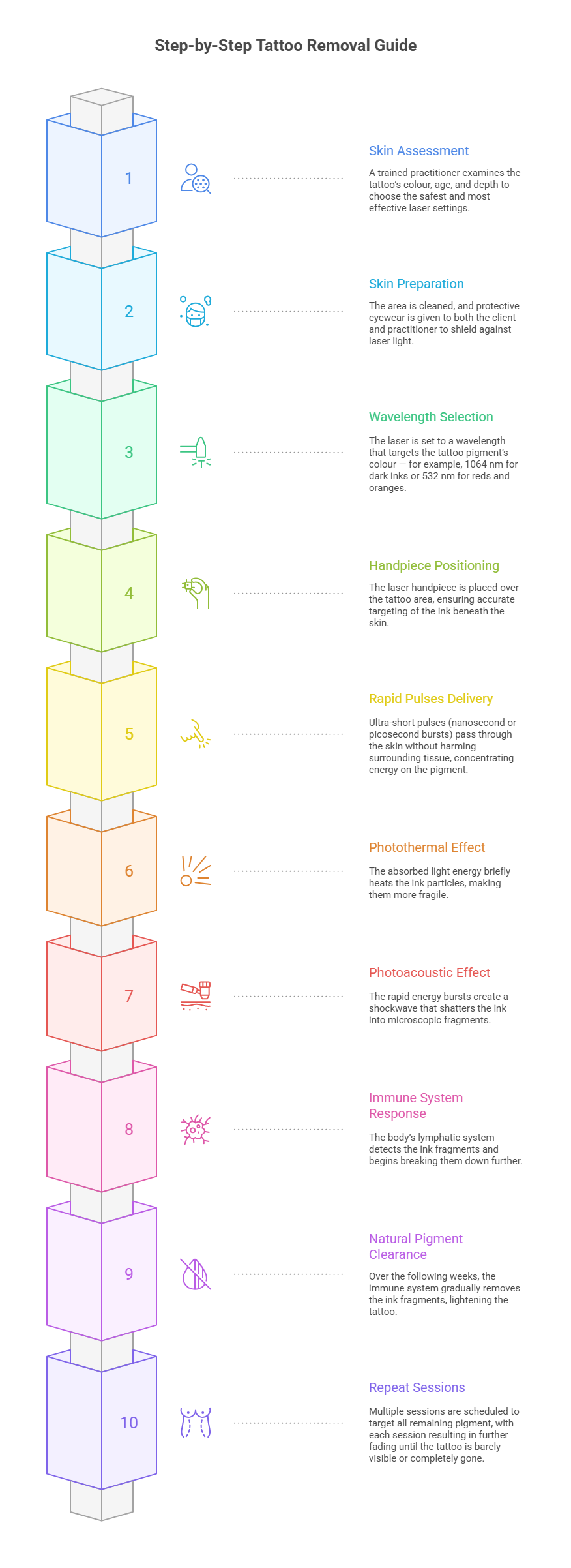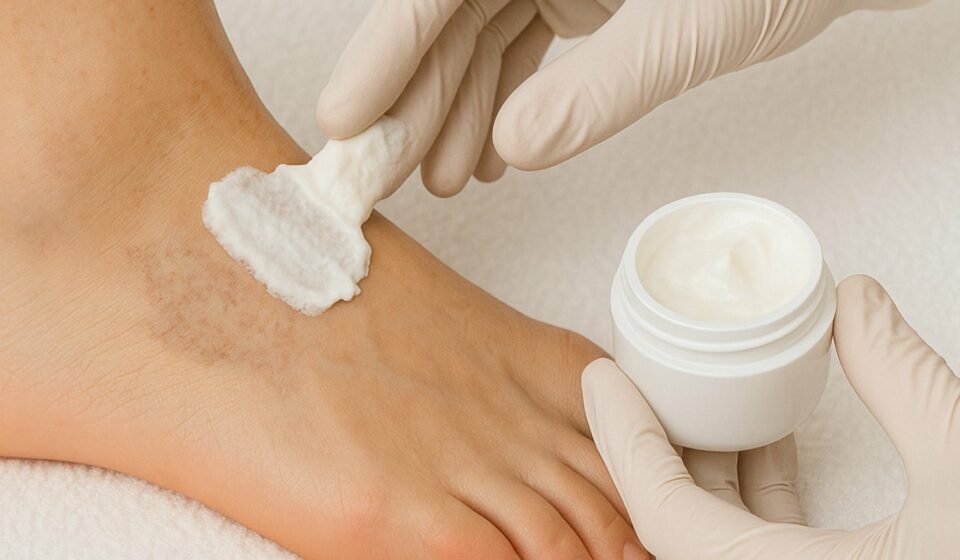Short answer: no, tattoo removal creams do not remove tattoos. They can sometimes lighten the surface slightly, but the ink sits in the dermis, deeper than topical creams can reach. That mismatch is why results are patchy, unpredictable, and often accompanied by irritated skin.
Table Of Content
Why creams fall short
Most creams rely on exfoliants or bleaching agents like TCA, glycolic acid or hydroquinone. These act on the epidermis. Tattoo ink lives in the dermis where macrophages hold pigment particles in place. A cream cannot selectively shatter those particles or move immune cells to clear them, so the tattoo stays. Clinical sources are consistent on this point, including guidance from the Bristol Laser Centre and technical reviews on PubMed.
01. What is inside removal creams
- TCA or strong acids: Chemical peels the top layer, which can cause burning or scabbing. The dermal ink remains.
- Hydroquinone or bleaching agents: Lighten surrounding skin rather than removing pigment granulomas in the dermis.
- Plant extracts: Marketed as gentle fades, though evidence is weak and results are inconsistent.
Medical sources also flag risks such as pigment change, blistering and scarring, especially with unsupervised use. See NHS specialist commentary via the NHS page.
02. What does work instead
Laser is the gold standard. Short energy pulses target ink selectively, fracturing pigment into smaller pieces that your immune system can clear. Different wavelengths tackle different colours, for example 1064 nm for black and 532 nm for reds. This is known as selective photothermolysis and photoacoustics, well documented in dermatology literature such as JAMA Dermatology. For a clear primer, see our explainer on how laser tattoo removal works and our data driven overview of tattoo removal effectiveness.
Clinics use Q switched Nd:YAG systems because they balance power, speed and safety across inks and skin tones. Our Nu Tatouage Plus pairs 1064 and 532 nm with high pulse energy, intuitive controls and low running cost, making professional outcomes repeatable and profitable for salons.

03. Creams vs proven options
| Method | Effectiveness | Main risks | Best use |
|---|---|---|---|
| Tattoo removal creams | Superficial lightening only | Irritation, pigment change, scarring | Generally not recommended |
| Laser removal | High for most blacks and dark blues | Temporary redness or swelling | Small to large tattoos, multicolour plans |
| Surgical excision | Complete removal | Linear scarring | Very small tattoos |
| Dermabrasion | Variable | Irritation, scarring | Selective cases under specialist care |
04. Safety notes for UK clients and clinics
- Choose trained providers: Laser parameters must suit ink colour and skin type. The NHS guidance highlights low scarring risk with modern systems and proper protocols.
- Safety governance: Clinics often appoint an LPA. We support this with our Laser Protection Adviser service plus free training and certification with every device.
- Comfort and protection: Consider dedicated cooling such as the Cryo 6 and appropriate safety goggles.
05. Quick FAQs
- Will creams eventually remove a tattoo? No. The ink sits deeper than creams can act and requires energy delivered into the dermis.
- Why do some colours linger? Certain pigments reflect or scatter the chosen wavelength. Yellows and whites are famously stubborn. See this short note from WebMD.
- Is laser safe for darker skin? Yes with correct settings and wavelength choice. 1064 nm is favoured for higher Fitzpatrick types as supported in peer reviewed studies.
For clinics: get hands on
If you would like to see a professional system built for reliable clearance and low running costs, book a look at the Nu Tatouage Plus. You can book a demo or request details, including finance, training, and our rapid swap support. Our Coventry showroom is open for in person demos.
If your goal is real removal, choose a clinician and a proper laser system, not a cream.
Dr Majid Zarandouz
Majid holds a PhD in organic chemistry and has been working with laser systems for decades. His career began in the mid-1990s, when he started researching and developing laser-based technologies for medical and cosmetic applications. Over the years, he has combined scientific expertise with practical engineering to design machines that are effective, durable, and straightforward to use in real clinic settings. As director of the British Institute of Lasers, Majid continues to focus on producing equipment that meets professional standards while remaining accessible to businesses of all sizes.

